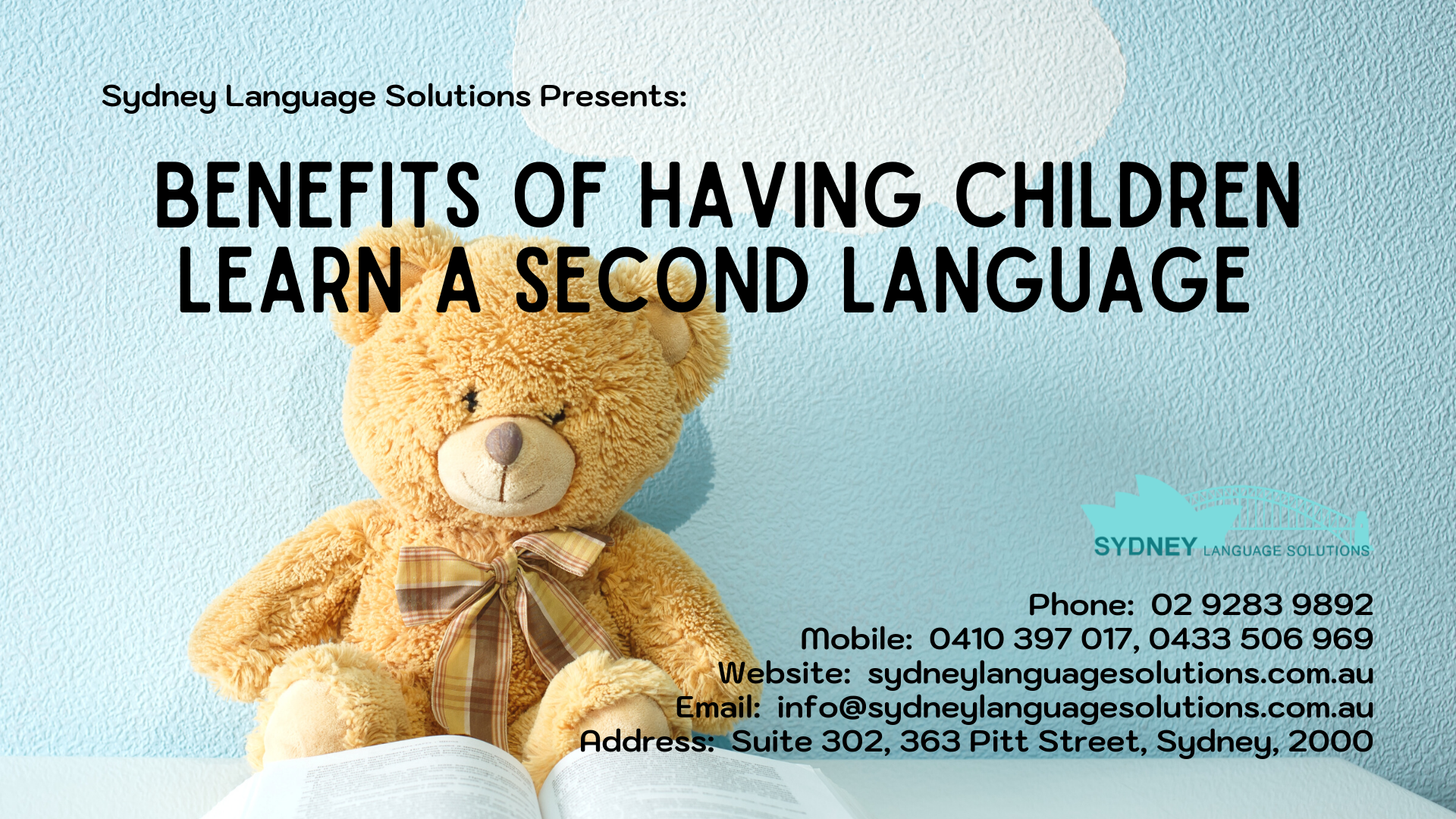Ways on How You Can Help Your Children Learn New Languages Faster
How you can help your child learn new languages faster:
- Make language learning a daily habit. Research shows that your child only needs 15 minutes a day to make progress while learning a new language. Some ways in which you can instill this habit in them is by making them listen to podcasts or watch a movie in a foreign language.
- Learn cognates. Languages like Spanish have a lot of words that we commonly use while speaking English. Learning these words will help your child transition better into the new language.
- Use flashcards and spaced repetition. Flashcards are proven to be the most effective way to memorize new languages. Flashcards use a concept called spaced repetition that basically prioritizes things your child does not know and helps them prioritize and work on their weak areas.
- Use a notebook and take it everywhere. Ask your kids to write down all the relevant vocabulary that you come across whenever your child is exposed to a new language.
- Speak the language from day one. There are 3 ways to achieve this. You can enrol your child in group learning in a good language school. This is great from a social perspective as your child will be studying with kids their own age and they can collaborate and work together on their skills.
This is where we can help you!
At Sydney Language Solutions we offer the best prices and deals for an atmosphere of fun and engagement in which your children can develop their language skills and aim towards a brighter future.
Advantages of Bilingual and Multilingual Children
INTERESTING FACTS ABOUT BILINGUAL/MULTILINGUAL CHILDREN:
– Better academic results: research has shown that bilingual/multilingual children can often concentrate better, have better problem-solving skills, understand language structure better and are better at multitasking.
– More diverse and interesting career opportunities later in life: employees speaking two or more languages can form better connections/relations with clients and other business partners. Therefore, multilingual candidates are preferred by employers.
– Children who speak more than one language have a better sense of self-worth, identity and belonging.
– Bilingual/multilingual children are said to be more educated since they can indulge in reading books written in various languages, enjoy movies and music in different languages.
– Children who learn foreign languages appreciate other cultures more and feel a sense of affinity while communicating with people from other countries.
BENEFITS OF LEARNING A FOREIGN LANGUAGE FOR CAREER GROWTH:
Learning starts at a very young age and learning new languages as a kid not only has a positive impact on your child’s personal growth, but it also gives them an edge in the professional world when they grow up.
Here are some advantages of learning foreign languages as a kid:
- Your kid will automatically become more attractive than other candidates when it comes to Global companies. In this dynamic world of globalization, employers are seeking candidates that are multilingual. International companies are trying t0 widen their reach across the globe and hire employees that can blend in with other cultures and fill in the communication gaps between the company and its clients.
- Career growth opportunities: being fluent in foreign languages doesn’t always mean your kid will have to go abroad. Many small local businesses prefer multilingual candidates who can help them explore new business opportunities and bring in more clients from other countries.
- Higher salaries: research shows that multilingual employees earn at least 10%-15% more than monolingual employees.
- Relationship building: having the ability to speak and understand different languages will allow your child to relate to various cultural groups at a personal level. Having a good relationship with colleagues is essential in a professional environment.
- Increased job opportunities: being fluent in foreign languages can be extremely beneficial for an individual’s professional growth. Many companies now require only employees who are bilingual or multilingual.
Benefits of Having Children Learn a Second Language
Why must children learn a new language from a young age?
- Experts say that children have more time and ability to pick up a new language faster than adults and develop a native-like pronunciation.
- Learning a new language also boosts a child’s creativity, problem-solving, critical thinking, and listening skills.
- In the long run, a second language will also be advantageous for them in the workplace where being multilingual gives one a competitive edge over others.
What makes our program different from other community language schools?
At some community language schools, the programs are designed to be beneficial if only both parents speak that particular native language at home for the children to have a chance to hear and practice the language. While this is advantageous for some children, others with only one parent who speaks language cannot have the chance to hear from their parents’ interaction. In fact, there are numerous households in Sydney with only one bilingual parent. In such circumstances, going to a language class with a structured program will help the students.
At Sydney Language Solutions, we offer language courses for children from all backgrounds, regardless of the number of parents who speak that language at home. These courses are also tailored for children whose parents are second-generation language speakers in Australia, or those parents who do not have enough background knowledge in speaking, reading, and writing their language to teach their children at home.
Top Destination: Bohol – Part 2
What do you call one of the smallest primate in the world with its eyes heavier than its brain?
Philippine Tarsier
Shy, mysterious and nocturnal animals measuring only between 85 to 160 millimetres in height and which you can place on the palm of your hand is an endemic and endangered specie in the Philippines. The Tarsier Conservation Center in Loboc is the best place to get a close encounter. Be sure to take off the flashes of your cameras and to observe silence as they easily get stressed and “commit sucide” by hitting their heads against objects that crack their thin skulls.
Top Destination: Bohol – Part 1
One of the Philippines’ top destinations and the tenth largest island, Bohol (Bo-hol) is known for its pristine beaches and resorts, Chocolate Hills and the Philippine Tarsier.
What do you call those giant mole hills that are covered in grass and turned chocolate brown at the end of the dry season?
Chocolate Hills
The Chocolate Hills, which some claim to consist of exactly 1268 hills, are natural limestone formations mostly between 30 to 50 metres high. Local legend explains that the hills are a result of the messy fight between two giants who threw sand and stones to each other for days. Exhausted, they made peace and left the island. Another legend tells of Arogo, a young and strong giant who fell in love with Aloya, a mortal girl. When she died, Arogo cried terribly with his tears transformed into hills. To this day, the mystery still exists to how these hills are formed.
Ten Most Common Tagalog Words/Expressions
1. Kamusta? (Ka-moos-ta) means Hello and/or How are you?
In informal conversation, ka is usually dropped so it becomes “Musta?”
2. Ano balita? (A-no ba-li-ta) means How are you? or What’s new?
This is also used when you haven’t seen or spoken to a person in a long time.
3. Oo/Opo (O-o/O-po) means Yes in casual or polite form, respectively. We usually say “Opo” when speaking to an elderly or to a person with a higher position to show respect.
4. Hindi (Hin-di) means No. Another casual way of expressing it is Dehins (de-hins) which is the reverse of Hindi added with –s at the end.
5. Paumanhin (Pa-oo-man-hin) or Pasensya na. (Pa-sen-sha na) to express an apology. Pasensya is derived paciencia which means patience in Spanish. Paumanhin is more formal and polite but Pasensya when added with a courtesy term po is more common and is still a polite expression.
6. Ayos! (A-yos!) is a Tagalog expression for Yes! and is used when someone is happy about a situation or a person. This should not be confused with Oo or Opo when agreeing to someone.
7. Magandang Umaga (Ma-gan-dang Oo-ma-ga) is Good morning. If you add po, it becomes more polite. Note that Maganda is beautiful in Tagalog so we use it as a greeting to describe a period of the day.
8. Magandang Tanghali (Ma-gan-dang Tang-ha-li) means Good noon. But Filipinos are more inclined to say Magandang Hapon (Ma-gan-dang Ha-pon) when the clock strikes 12 noon until the whole afternoon before 6 o’ clock in the evening in which case we say
9. Magandang Gabi (Ma-gan-dang Ga-bi) for Good evening.
10. Ba-bay. (Ba-bay) is the most common way to say goodbye in Tagalog.
Ten Most Common Tagalog Words/Expressions
Three Reasons for learning Tagalog
1. Tagalog is an easy language.
- You say the words as you read them. There are no silent letters. Example: Salamat. (Sa-la-mat) or Thank you.
- Similar to the English language, words do not have gender. Both men and women say similar phrases to each other. Example: Kamusta ka? (ka-moos-ta ka?) or How are you?
- If you are a native/fluent speaker or just have a backgound of Spanish, you’ll find it easy to learn Tagalog as almost half of the words are derived from Spanish. Example: You will hear some Filipinos count in Spanish: uno (one), dos (two), tres (three) and so on.
In informal conversational Tagalog: Puwede ba akong umupo sa silya? (May I sit on the chair?) Puwede came from puede which means May I?; silya came from silla which means chair.
2. Filipinos are amongst the friendliest, warmest and hardworking people in the world.
Although majority of the Filipinos can speak English, you will find them willing to teach you Tagalog and you will feel more appreciated for learning the language.
3. Enjoy Filipino songs
Filipinos are known to be fantastic singers. Lea Salonga, Regine Velasquez, and Charice Pempengco are among those who have gained international success. Here is Regine Velasquez’s version of “Tuwing Umuulan at Kapiling Ka” with lyrics (To be with you, everytime it rains). http://www.youtube.com/watch?v=hSES6fIk34o. This song describes how the strong pouring rain emphasises the singer’s feelings to the one she loves. Listen and enjoy the melody or ask a Filo to translate it for you. Not only do you enjoy the song more but you also learn Tagalog words!






Latest Comments